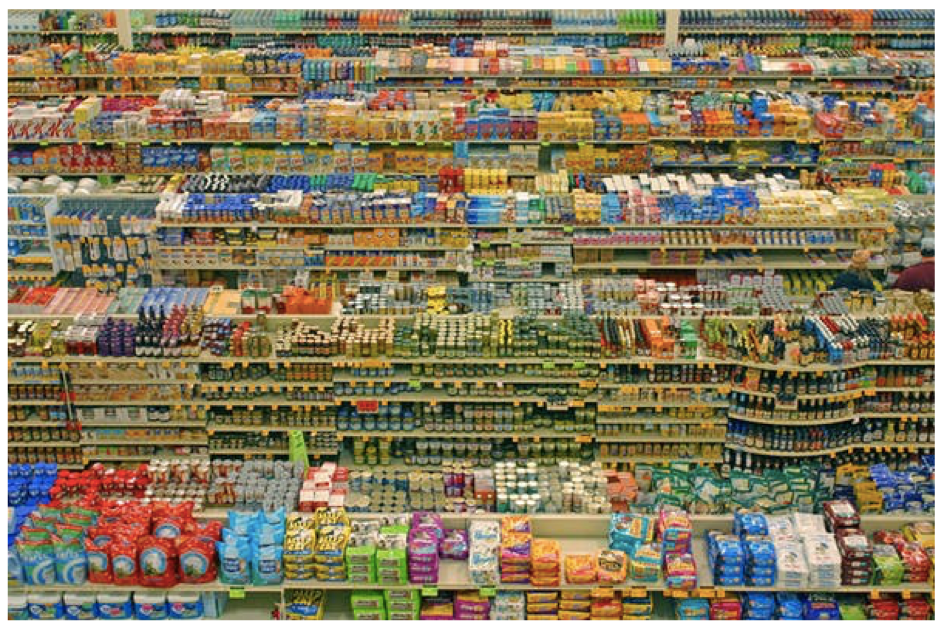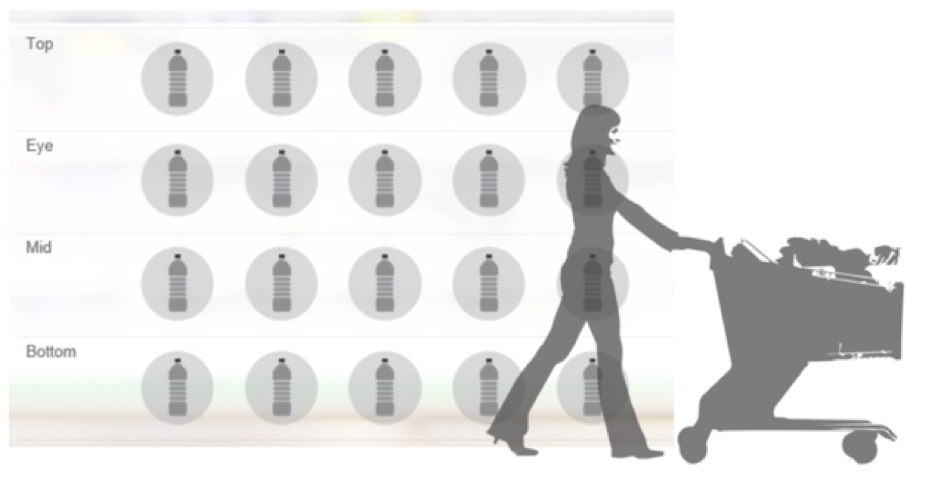
Doing the research for an Unit Load analysis for products in supermarkets for the logistics course, I came over a really interested, related topic: the product placement in supermarkets.
I was aware of the fact that supermarkets do place their products with a certain strategy, but I never thought how detailed these marketing strategies are and which factors they include.
Supermarkets usually have a planogram that is a “diagram or model that indicates the placement of retail products on shelves in order to maximise sales”.
The set-up of the shelves:
In the middle of the shelves there is the “view zone” (at about 140 to 180 centimeters) and the “grab zone” (60 to 140 centimeters). At this level the top sellers are placed, meaning the products that usually are selling themselves very good and are more expensive. The sentence “eye level is buy level” describes exactly this aspect. Sometimes this zones actually are planned in the way that they take into account the difference in height between women and men of about 10 centimeters. The less popular shelve zones also have a name they are called “bend or stretch zones”.

In return for extra payments, companies can even get their products placed at the “good zones”. The following video gives more details towards this topic:
The blocking:
Experts use this expression for the fact that often there are placed boxes or tables at free spaces next to the shelves with pretended special offers. They shell signalize to the clients that they can make some great deals here. Especially when the clients see products in big packages on pallets – like for example 1-kilogram packages of pasta they instinctively think that this must be super cheap. Sometimes it is, sometimes not. Or sometimes the product next to it is expensive but gets a lot of attention because of the deal besides it.
The arrangement of products:
One might think that putting similar products together is the best option. For example, there is baked goods area, bathroom area or a sweets area. But supermarkets sometimes are placing complementary goods together, like for example beer and crisps. So, if you buy beer, you see the crisps and take them with you because they match to the beer. And maybe you just see the high price crisps next to the buy, but you take them anyway because you don´t want to search for cheaper crisps.This was just a short introduction to the psychological tricks that supermarkets use to make more profits. If you are interested, you can read more in these articles:
– http://theconversation.com/the-science-that-makes-us-spend-more-in-supermarkets-and-feel-good-while-we-do-it-23857
– https://www.dailymail.co.uk/news/article-3418623/Supermarkets-laid-shoppers-buy-explained-video.html
– https://traxretail.com/2017/11/22/eye-level-buy-level-importance-store-product-placement/
Thanks for this post about product placement and planogram terms. I was wondering when it comes to paying for prime shelf space, do retailers typically track and disclose the difference in “view/grab zones” vs “bend/stretch zones” with manufacturers/brands. As in, “we charge this premium because our data shows it’s worth it.”